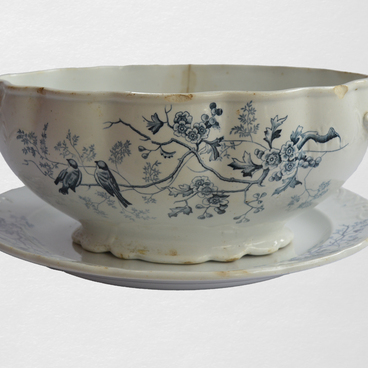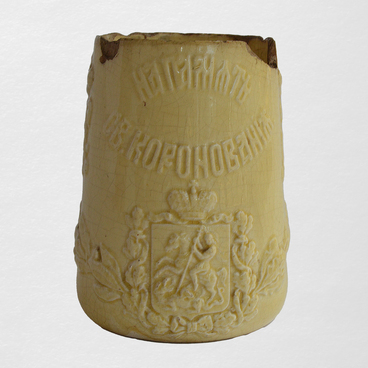There is a card table of the 19th century in the collection of the museum-manor. It owes its origins to the Spaniards and its name to the Russians. The word ‘lomber’ (‘shadow’ in Spanish), used in the name of this table in Russian, comes from the name of a card game, invented by Spanish in the 16th century. This piece of furniture was rather popular not only among avid players.
In France the game L’Hombre was very popular during the reign of Louis XIV, the 17th century. But its fame was not long. The game reached Russia 200 years later, but by the time it was superseded by whist and preference in Eugene Onegin described by Alexander Pushkin.
At first, people used for the game ordinary tables upholstered with green cloth. The game with this type of furniture came to Russia in the 18th century. It became the main element of fashionable drawing rooms and salons of the time. The presence of such furniture indicated prosperity and a high social status of the owners. Gradually the table’s structure and mechanism became more complex: supporting and rotating mechanisms were added. This is how card tables got their final form.
Their distinctive feature was the fabric covering and symmetrical table top, allowing each player to occupy an equally sized playing field. Any lower crossbars and shelves were kept to a minimum for a comfortable footing. Card tables became an indispensable addition to every welcoming home. Often, they could be a real work of art: tables were made from expensive wood, decorated with carved surrounds, painted or decorated with precious stones and metals.
Many classical authors of Russian literature used the tables not only to play cards but also to create their works. For example, Alexander Pushkin wrote ‘The Queen of Spades’ at a similar table. The word ‘sandwich’ also came into use thanks to this piece of furniture. According to the commonly accepted version, the name of the dish comes from the title of John Montagu, the 4th Earl of Sandwich, who lived in the 18th century. Legend has it that he was an avid gambler and could play night and day, so he used to ask for cold beef placed between two toasted slices of bread in order not to be interrupted for a meal and keep his hands clean.
An unusual love story is also a part of the history of the card table. Once, Count Lev Razumovsky fell in love with Alexander Golitsyn’s wife. While playing, the loser Golitsyn put his wife at stake, but lost; and Razumovsly married her.
In France the game L’Hombre was very popular during the reign of Louis XIV, the 17th century. But its fame was not long. The game reached Russia 200 years later, but by the time it was superseded by whist and preference in Eugene Onegin described by Alexander Pushkin.
At first, people used for the game ordinary tables upholstered with green cloth. The game with this type of furniture came to Russia in the 18th century. It became the main element of fashionable drawing rooms and salons of the time. The presence of such furniture indicated prosperity and a high social status of the owners. Gradually the table’s structure and mechanism became more complex: supporting and rotating mechanisms were added. This is how card tables got their final form.
Their distinctive feature was the fabric covering and symmetrical table top, allowing each player to occupy an equally sized playing field. Any lower crossbars and shelves were kept to a minimum for a comfortable footing. Card tables became an indispensable addition to every welcoming home. Often, they could be a real work of art: tables were made from expensive wood, decorated with carved surrounds, painted or decorated with precious stones and metals.
Many classical authors of Russian literature used the tables not only to play cards but also to create their works. For example, Alexander Pushkin wrote ‘The Queen of Spades’ at a similar table. The word ‘sandwich’ also came into use thanks to this piece of furniture. According to the commonly accepted version, the name of the dish comes from the title of John Montagu, the 4th Earl of Sandwich, who lived in the 18th century. Legend has it that he was an avid gambler and could play night and day, so he used to ask for cold beef placed between two toasted slices of bread in order not to be interrupted for a meal and keep his hands clean.
An unusual love story is also a part of the history of the card table. Once, Count Lev Razumovsky fell in love with Alexander Golitsyn’s wife. While playing, the loser Golitsyn put his wife at stake, but lost; and Razumovsly married her.



